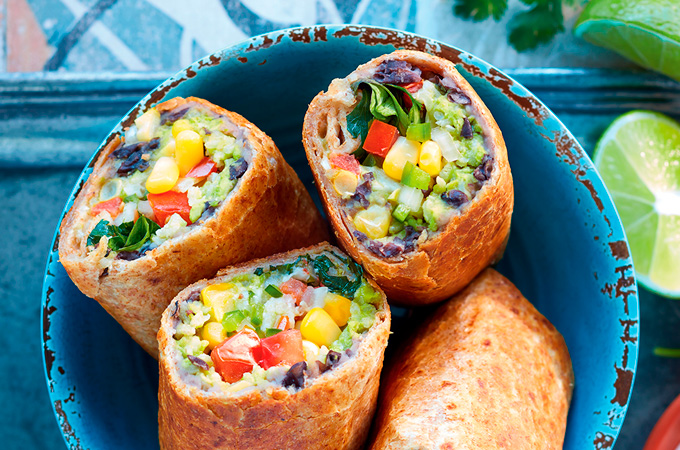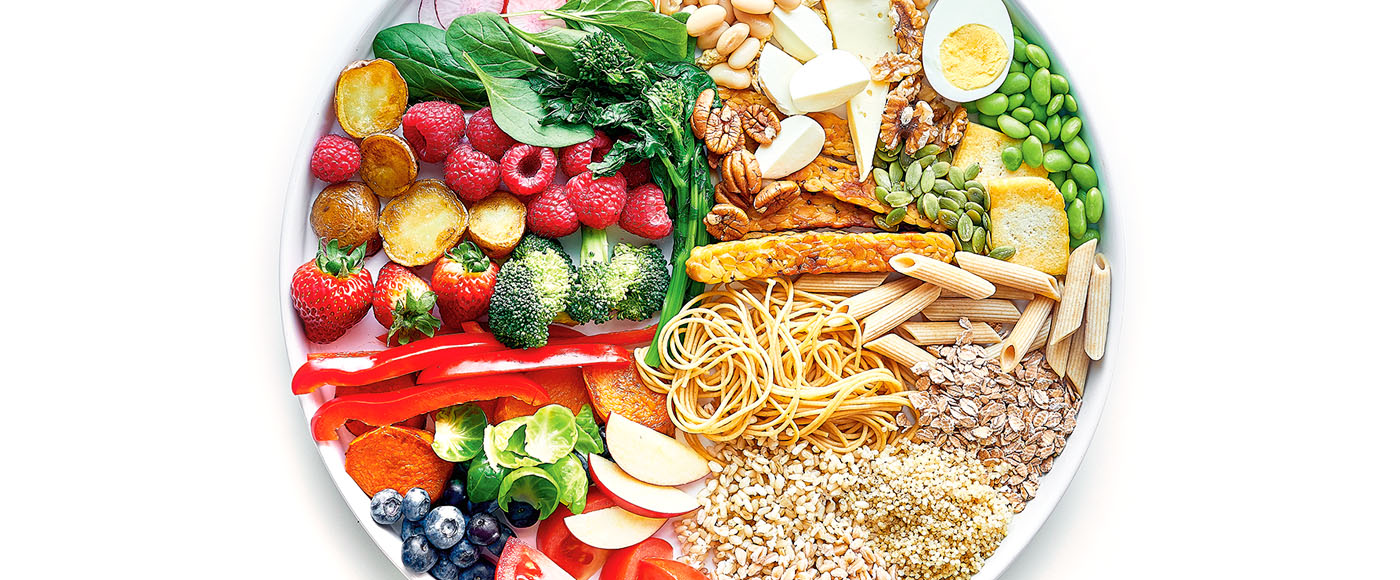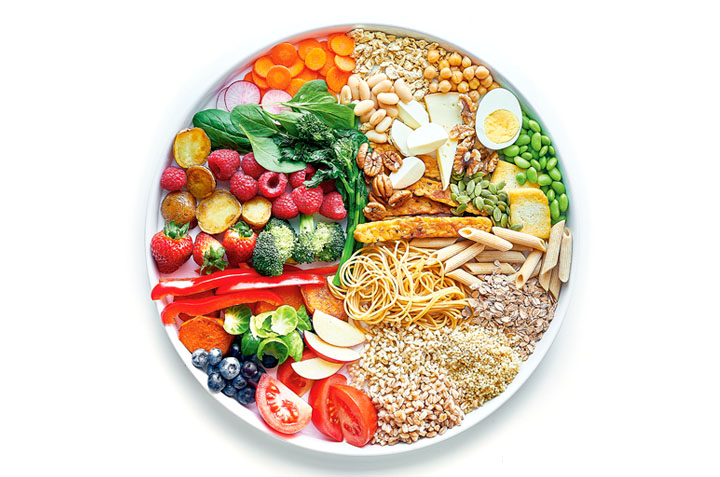1. A balanced meal
Get inspired by the Canada’s Food Guide balanced meal model to prioritize fresh, minimally processed foods. They contain better quality fats and little or no added salt and sugar.
There’s no need to recreate this meal for breakfast, lunch and dinner all year long. Just use it as a guide to find foods that deserve a greater place in your diet and, ideally, in what proportions.
2. Vegetarian proteins
They contribute to satisfying your hunger (providing a sense of satiety) until your next meal. Here are some examples of the quantity of protein per serving for a given food, in grams (g). Aim for 15 g to 30 g of protein per meal.
- • Hemp seeds: 13 g of protein per ¼ cup (60 ml)
- • Chickpea flour: 6 g of protein per ¼ cup (60 ml)
- • Soy flakes: 12 g of protein per ¼ cup (60 ml)
- • Seitan: 20 g of protein per 85 g serving
- • Wheat germ: 7 g of protein per ¼ cup (60 ml)
- • Nutritional yeast: 4 g of protein per 2 tbsp (30 ml)
- • Spirulina seaweed meal: 5 g of protein per 1 tbsp (15 ml)
3. Plant fibre
Bet on fibre—truly and madly! It promotes a diverse and healthier microbiota, as well as optimal intestinal regularity. Here are some examples of the quantity of fibre per serving for a given food, in grams (g).
FRUITS:
- Apple: 4 g of fibre per fruit, with skin
- Strawberries: 4 g of fibre per 1 cup (250 ml), sliced
LEGUMES:
- 7 g to 9 g of fibre per ¾ cup (180 ml)
VEGETABLES:
- Broccoli: 4 g of fibre per 1 cup (250 ml), cooked
- Sweet corn: 3 g of fibre per cob, cooked
NUTS, SEEDS AND THEIR BUTTERS:
- Various nuts: 4 g of fibre per ¼ cup (60 ml)
- Peanut butter: 3 g of fibre per 2 tbsp (30 ml)
TEMPEH, EDAMAME AND TEXTURED VEGETABLE PROTEIN (TVP):
- Tempeh: 7 g of fibre per 85 g
- Edamame: 4 g of fibre per ½ cup (125 ml)
- TVP: 13 g of fibre per 1 cup (250 ml), rehydrated
WHOLE WHEAT CEREALS, PSEUDO-CEREALS AND THEIR FLOURS:
- Quinoa: 6 g of fibre per 1 cup (250 ml), cooked
- Whole wheat flour: 3 g of fibre per ¼ cup (60 ml)
Many people worry about not getting enough protein with a vegetarian diet. The truth is that protein deficiency is rare. Rather, fibre is more commonly lacking in some people’s diets, especially those who frequently eat large servings of meat with few vegetables. Replacing meat more often with vegetable proteins also means eating more fibre!
The numbers are included simply for you to have fun learning which foods contain fibre and protein. Well-balanced meals, with abundant vegetables, should adequately fulfill your daily needs. So you don’t have to calculate everything to get there! Enjoy!
Refer to our vegetarian section for all our meatless recipes.



